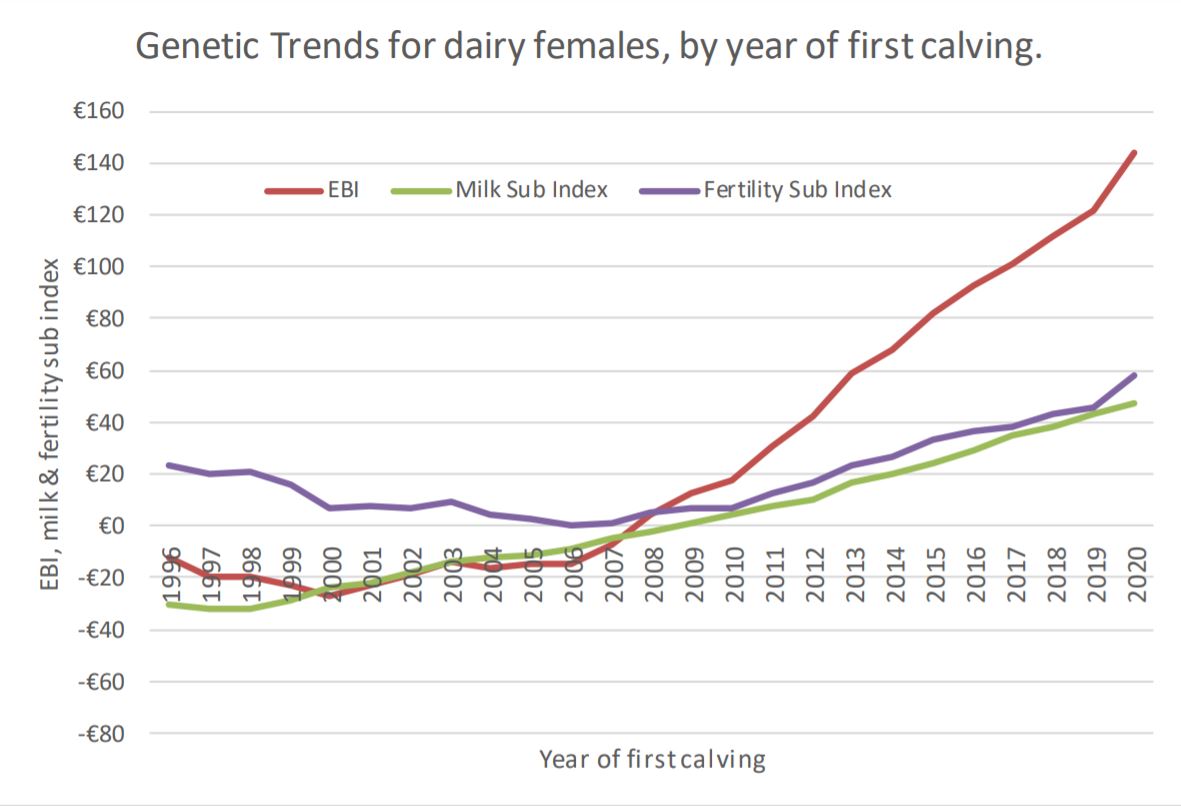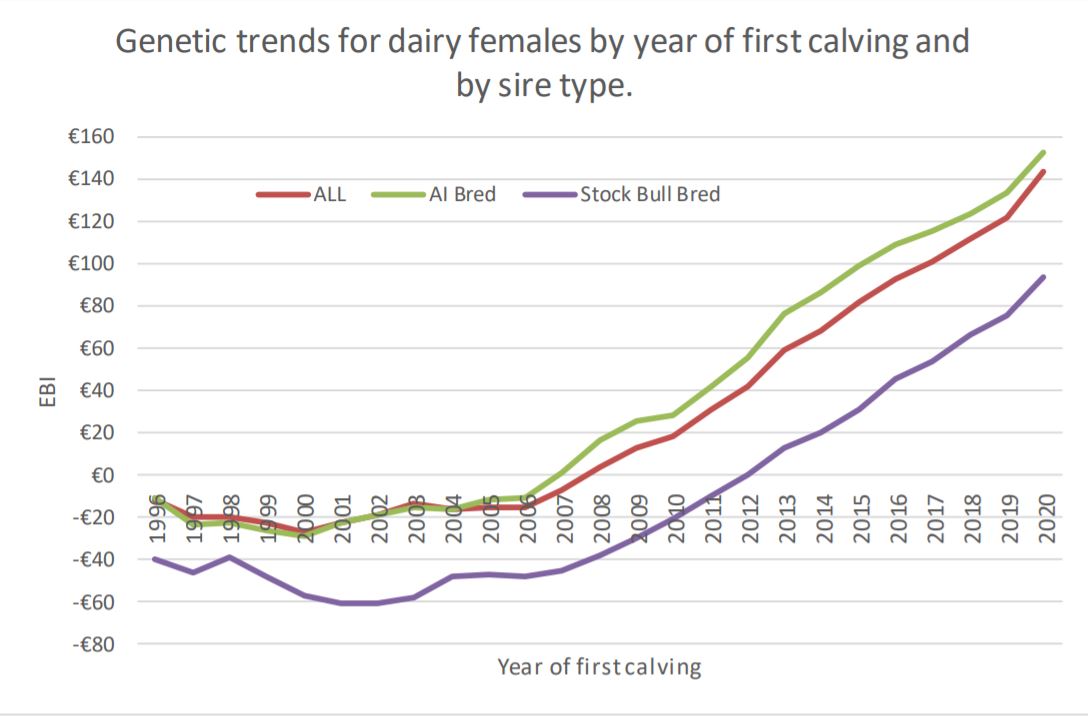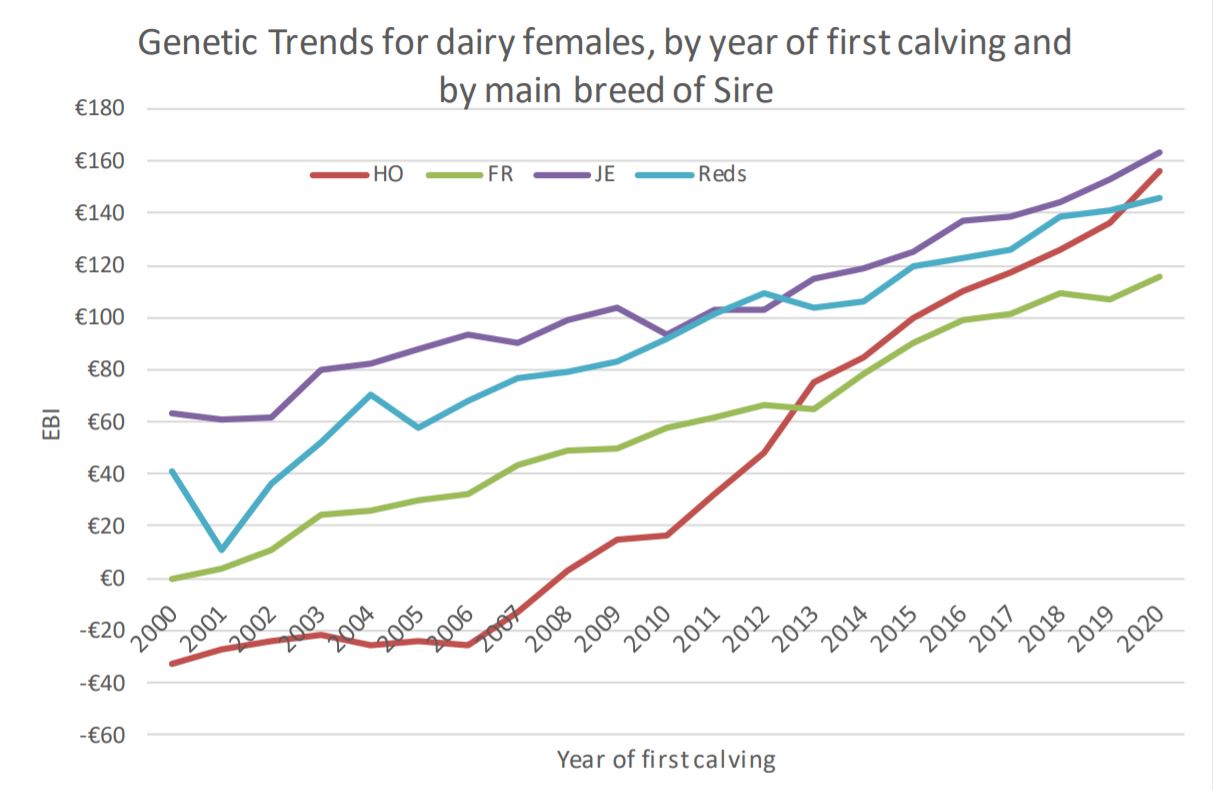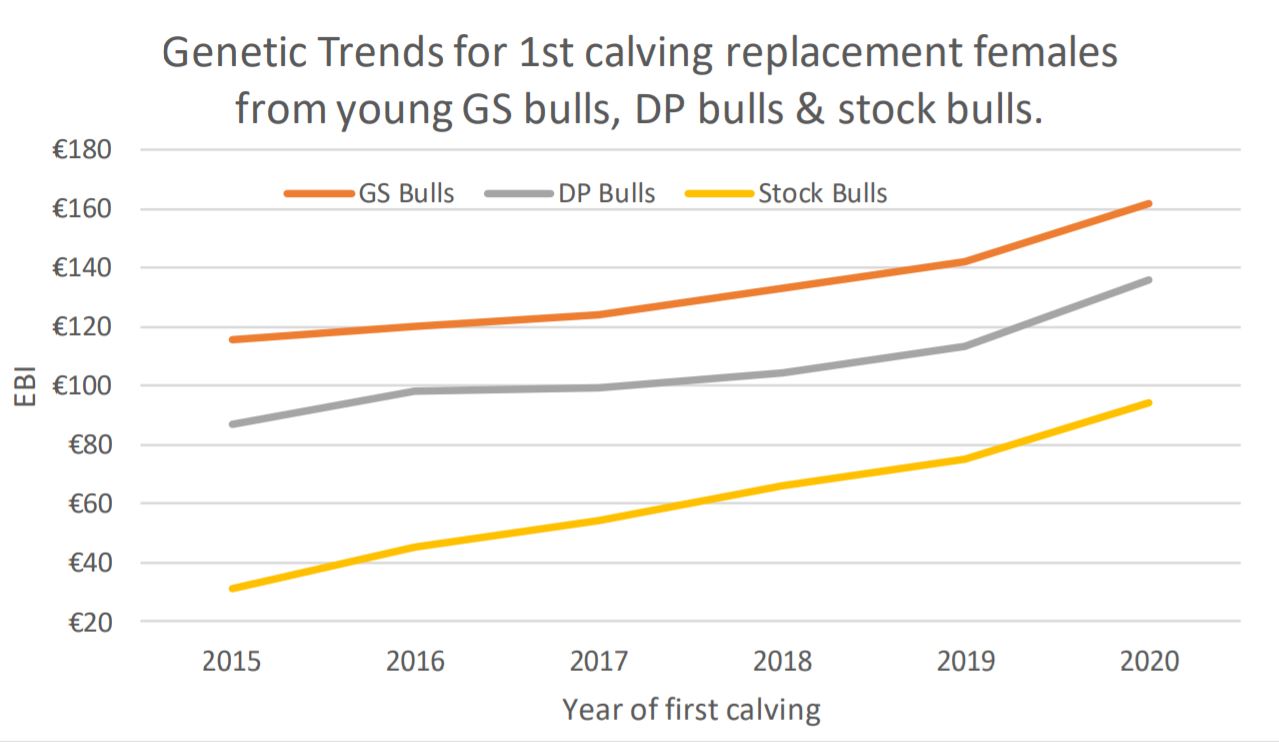What is the rate of gain in EBI? How does this differ for different categories of animals? Dr. Andrew Cromie, ICBF takes a look at the latest genetic trends in EBI.
Reference Material – Presentation ‘Genetic Trends in EBI; Latest Analysis’ – March 2020
Key Questions
How do all progeny with an EBI differ? What sort of trend are we seeing with AI bred progeny & Stock Bull progeny in terms of genetic gain in EBI? Are different breeds of sire having an impact? Is their a difference between the performance of young genomic bulls vs daughter proven bulls? This piece of analysis shows the latest genetic trends in EBI accross these parameters.
Data Analysis
The data used in this analysis is the latest EBI data extracted for dairy females based on their year of first calving. Using 2020 as an example;
- Take all replacement heifers that calved for the first time on farms this year (to-date).
- Key questions. What is their EBI? Who is their sire? Is he an AI sire? What breed is he? Was the sire a young Genomic Selected (GS) bull or a Daughter Proven (DP), when the farmer decided to use the semen in 2017 (i.e., calved in 2020 => calf born in 2018 => inseminated in 2017).
This was then repeated for additional years of first calving; 2019, 2018, 2017, 2016 and so on.
EBI Continues to Increase
The rate of gain in EBI is now on average €12.60/year. This is the average increase for the last 10 years in EBI. This high rate of gain is in line with the “world’s best”. Moreover this rate of gain is balanced across milk & fertility.

AI Bulls ahead of stock bulls
Progeny of AI bulls are €60 higher than progeny of stocks bulls, in EBI terms. This is equivalent to €120/lactation and €540 over cow’s lifetime (average length of lactation for cows in Ireland is 4.5)

Holstein breeding programme gaining
The Gene Ireland dairy programme is delivering for all breeds, but in particuliar the Holstein breed which is the largest programme. The Holstein breed was over €100 behind Jersey breed in mid-2000’s (when program started). Fast foward to today and the Holstein breeed is on par for females calving in 2020. There is twice the rate of gain for the Holstein breed compared to other breeds.

Genomic versus Daughter Proven
Genomics has been applied widely in the context of the Holstein breeding program. How have the GS bulls performed relative to the DP bulls? Taking 2020 as the example year, was the sire a young GS bull or a DP bull when the farmer decided to use the semen in 2017 (i.e., calved 2020 => calf born in 2018 => cow inseminated in 2017). Looking at relevant ICBF Active Bull List (i.e, Spring 2017), bulls born in 2013, 2014, 2015 were categorized as GS bulls. All older bulls were DP bulls. Exercise repeated for calving years 2019, 2018, 2017, 2016 & 2015.
The percentage of progeny from young GS bulls has increased from 44% in 2015 (relative ICBF Active Bull List was 2012), to 76% for 2020 (year to date). This analysis is based on progeny from main breed Holstein AI sires.
Young GS bulls ~€30 ahead of DP Bulls
Progeny from young GS bulls are €30 ahead of progeny of DP bulls. This is consistent across all years. In line with expectation
as these bulls are ~3 years younger, equivalent to ~3 years genetic gain. The young GS bulls are some €70 ahead of stock bulls. Teams of high EBI GS bulls should be used in your breeding program this Spring in order to maximise genetic gain.

In Short
- High rates of genetic gain are now being achieved on Irish dairy farms. ~€12/cow/year (~0.20 genetic SD in EBI).
- AI bred progeny are ~€60 ahead of stock bull progeny in EBI terms. Worth ~€540 in a cow’s lifetime.
- Rate of gain is highest in the Holstein breed. This is a direct result of the impact of G€N€ IR€LAND breeding program, including the
application of genomics. - Progeny from young GS bulls are consistently €30 ahead of DP bulls in terms of EBI.
- Use teams of high EBI bulls in your dairy breeding program this Spring. Invariably these will be AI bred and young GS bulls.
Reference Material – Presentation ‘Genetic Trends in EBI; Latest Analysis’ – March 2020

